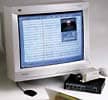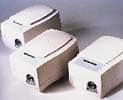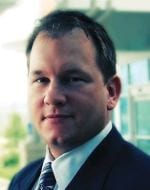The Sleep Disorders Center of Alabama continues to expand its services through education, recruitment, research, and value-added services.

Until recently, Alabama was ranked second to California with the largest number of sleep centers accredited by the American Academy of Sleep Medicine (AASM). With 30 accredited sleep centers, Alabama could be perceived as a competitive marketplace where facilities battle it out to gain market share. Yet even though Alabama has the largest number of accredited sleep centers (based on per capita) than any other state, this still may not be enough to meet patient demands, according to local sleep experts.
Sleep medicine pioneer G. Vernon Pegram, PhD, ACP, director of the Sleep Disorders Center of Alabama, Birmingham, and the founder and director of the Institute of Sleep Medicine, also in Birmingham, stresses that most accredited sleep centers have a waiting list for sleep studies, which reflects this high demand. “As awareness in the medical community continues to grow, we expect that this growth will continue in Alabama and the rest of the country,” Pegram says.
One major reason for this substantial growth in accredited sleep centers in Alabama is that the state’s primary insurer, Blue Cross, will provide reimbursement only for those sleep studies that are conducted in accredited facilities. Although Blue Cross maintains 80% of the market share, the state’s remaining insurers have also become educated about the value of sleep studies performed at credentialed facilities. “Insurers in Alabama want to pay for the best results and that’s why accreditation guidelines are so important,” Pegram explains.
Pegram, along with Robert Doekel, Jr, MD, medical director of the center, have worked together for more than 20 years not only to expand the services of their facility but also to train and educate other medical professionals in the state to open similar centers. Both individuals are board-certified sleep medicine specialists. “If the patients were not out there, we would never have grown so exponentially,” Pegram cites. “Once we started helping others provide this service, we found ourselves getting busier too.”
Standing Out
Although Pegram believes there is plenty of business in Alabama, he admits that his center has taken certain steps to stand out from the crowd. One difference is that the center has a high commitment to the amount of staff time spent with patients. A physician sees each patient both before and after the sleep study. “This is not required, but we feel in the long run we avoid communication problems, particularly if we’re in a situation where we’re trying to contact them by telephone,” Pegram says. This level of communication is critical because there are so many different factors that can cause the estimated 70 plus different sleep disorders. Pegram cites a recent case in which a patient was studied for sleep apnea, but when the test indicated an apnea index of 10 an hour, it did not appear to be high enough to be contributing to her daytime sleepiness. “In this particular case, it became important to assess her medications and other medical conditions that may have been causing this sleepiness,” Pegram says. “It’s much more difficult obtaining this information if the patient leaves immediately following the study.”
Jill Luckey, operations manager for the center, stresses that the Sleep Disorders Center of Alabama has a strong reputation in the state due to Pegram and Doekel, who have been in sleep medicine for 38 and 25 years, respectively. The center received its fifth accreditation from the AASM in 2000. “Medical professionals think of us as a provider of sleep medicine rather than just sleep diagnostics,” Luckey says. “We evaluate, diagnose, treat, and follow up with every one of our patients to ensure that they continue the treatment plan prescribed by the physician.”
The Sleep Disorders Center of Alabama has two suburban facilities located in the eastern and southern areas of Birmingham. The nine-bed center conducts approximately 1,200 studies annually and about 80 to 100 new patients are seen each month. Following their sleep studies, patients are seen back at the center at 4 weeks, 6 months, and 1 year poststudy.

Education
In addition to having a strong reputation among physicians throughout the state, both Pegram and Doekel have maintained a presence within national and international sleep medicine circles. Pegram helped develop the National Sleep Medicine Course, sponsored by the AASM, and continues to teach this course as well as classes at the Institute of Sleep Medicine in Birmingham. To date, the institute has trained more than 1,600 students (both physicians and technicians) from all 50 states and 12 foreign countries. In addition to training most of the sleep specialists in Alabama, Pegram and Doekel serve as medical directors for various sleep centers throughout the state. They have also participated in many different levels on AASM boards and committees.
Much of this focus on education is due to the fact that the Sleep Disorders Center of Alabama is a partner of Atlanta-based Sleep Sciences Inc, a leading US provider of sleep medicine services. Offering a broad range of patient care, education, research, and program services, Sleep Sciences employs a team of 60 experts representing medical, managerial, and marketing disciplines. In addition to providing a network of owned and supported sleep centers, Sleep Sciences cosponsors practical research with major pharmaceutical and equipment companies, and provides management services to launch or improve the operation of sleep laboratories.
The Setting
The Sleep Disorders Center of Alabama currently has a freestanding three-bed laboratory in a medical office building and a six-bed in-hospital laboratory at HealthSouth Medical Center in Birmingham. The state-of-the-art sleep suites offer full polysomnograms for sleep disordered breathing and continuous positive airway pressure (CPAP)/bilevel titration; multiple sleep latency testing (MSLT) for excessive daytime somnolence such as narcolepsy or idiopathic hypersomnolence; tests for abnormal behaviors during sleep such as rapid eye movement (REM) behavior disorder; and gastroesophageal pH monitoring for nocturnal gastroesophageal reflux.
The sleep rooms have double beds and family members are welcome to visit. The rooms have a home-like feel with attractive bedspreads, curtains, nightstands, recliners, television sets, lamps, and floral arrangements. Each room is painted brightly and has a decorative wallpaper border. “We want the patient to feel like they’re in their own bedroom at home,” Luckey says.
Patients in need of sleep studies are able to schedule an appointment for either the day or evening, Sunday through Thursday. MSLTs can also be scheduled during the day. Wait times for sleep studies used to be about 4 to 6 weeks at the center; however, the addition of two beds has brought the wait time down to about 2 weeks, which is much more acceptable to referring physicians.

Value-Added Services
The center is also focused on how to bring valued-added services to its patients. The ability to see a physician the morning after the study appears to be one of the center’s biggest strengths in customer service. “If CPAP is needed the morning after the study, the physician is there to oversee the test,” Luckey says. In addition, the physicians’ hours are 7:30 am to 5:00 pm and the sleep laboratory is open from 7:30 pm to 7:30 am. The administrative office also provides preauthorizations and handles billing over the Internet as well as through the company’s email address.
Customer surveys are taken using postcards, which are distributed during office visits and after each sleep study. The data compiled from these surveys is interpreted by the center’s quality assurance staff to specifically critique areas such as wait times, physician and office staff satisfaction, sleep technician satisfaction, physician communication, facility cleanliness, and convenience of location.
Since patients are monitored closely throughout the sleep study process by various staff members, the center has a full complement of employees. Currently, there are two front-desk employees, one transcriptionist, a registered nurse, two CPAP therapists, a two-person billing staff, a director of operations, a clinical director (RPSGT), two day-shift supervisors (one is RPSGT certified), six technologists (all of whom will take the registry boards in December 2002), two research coordinators (RPSGT, LPN and a certified clinical research coordinator, RN), two physicians, and a PhD.
Recruitment
According to Luckey, recruitment is generally challenging due to the shortage of trained sleep technologists. “We usually resort to hiring technologists from other sleep centers but that comes at a price, since they’re usually looking for higher salaries and shifts with three 12-hour days,” Luckey says. Retention has not been as difficult since most of the staff tend to stay with the center for long periods. “At least four of our employees drive more than 1 hour to work, so that proves that we offer employees a good environment to advance their careers.”
The sleep staff at the center are especially pleased with its working relationship with HealthSouth Corporation, which is in the process of building the first all-digital, automated hospital in Birmingham. Currently, the center is planning to operate 10 sleep beds in this new facility. Six will be designated for sleep studies, two for pediatrics, and the remaining two for research studies. “This is an exciting venture for all of us at the center because this will definitely be a one-of-a-kind facility,” Luckey says.
The hospital will include patient beds with display screens connected to the Internet, electronic medical records storage, digital imaging instead of traditional X-ray film, and a wireless communications network that will permit physicians, nurses, and other health care professionals, armed with portable computers, to securely update and access patients’ medical records from anywhere in the hospital or around the world.
Research
The Sleep Disorders Center of Alabama is also well known for its work in sleep medicine research. Presently, five research studies are under way, including a major one on narcolepsy. The center has the capacity to study research patients 7 nights a week and has more than 14,000 sleep patients who can be considered for participation in the studies. Pegram notes that one of the advantages of conducting research studies is that they become another vehicle for promoting the center to physicians. “For most studies, we typically approach about 20 referring physicians to find out if they have patients who would like to participate in the study,” Pegram says.
In general, patients are referred to the center from a variety of referring specialties including psychiatry, internal medicine, pulmonary, family medicine, cardiology, and ear, nose, and throat. “We have been fortunate in being able to attract business by the sheer reputation of our physicians who have almost 60 years of sleep medicine experience between them,” Luckey says. Due to its high percentage of physician referral business, the center does very little advertising and promotion; however, occasionally the center will participate in employer health fairs; radio, television, and print advertising involving physician interviews; seminars; and newsletters. To encourage physician referrals, the center makes the referral process as easy as possible for the physician’s staff by maintaining good communication.
Patient Population
The patient population runs the gamut from adolescents to the elderly. “We see all walks of life and try to accommodate those that do not have insurance,” Luckey says. “For example, if we see someone in our office who looks like they have severe sleep apnea and the patient’s insurance will not pay for the sleep study, we will find a place to squeeze them in at a reduced rate—often from a last-minute cancellation from another patient,” Luckey says.
Like most sleep centers, the Sleep Disorders Center of Alabama treats primarily patients who are diagnosed with obstructive sleep apnea (OSA). Government statistics reveal that 80% of individuals exhibiting some form of sleep-related disorder will be diagnosed with OSA symptoms as their primary underlying diagnosis. Sleep apnea is very common, says Pegram, and affects more than 12 million Americans.
Sleep experts like Pegram stress that if left untreated, sleep apnea can cause hypertension and other cardiovascular diseases, memory problems, weight gain, impotency, and headaches. Furthermore, untreated sleep apnea may be responsible for job impairment and motor vehicle crashes.
Pegram adds that recent research findings have uncovered new areas of concern involving sleep disorders. Over the years, the two groups that have been ignored are teenagers and young adults. “More young people are having sleep problems generally because they get less sleep than they actually need,” Pegram says. “We need to educate family practitioners about this, not to mention high schools and colleges that often start their classes as early as 7 am.” Pegram believes that as awareness of sleep disorders increases in the medical community and the public at large, the field will continue to grow significantly. “At some point we’ll reach a saturation point in terms of an oversupply of providers in Alabama, but we’re far from it now.”
Carol Daus is a contributing writer for Sleep Review.





